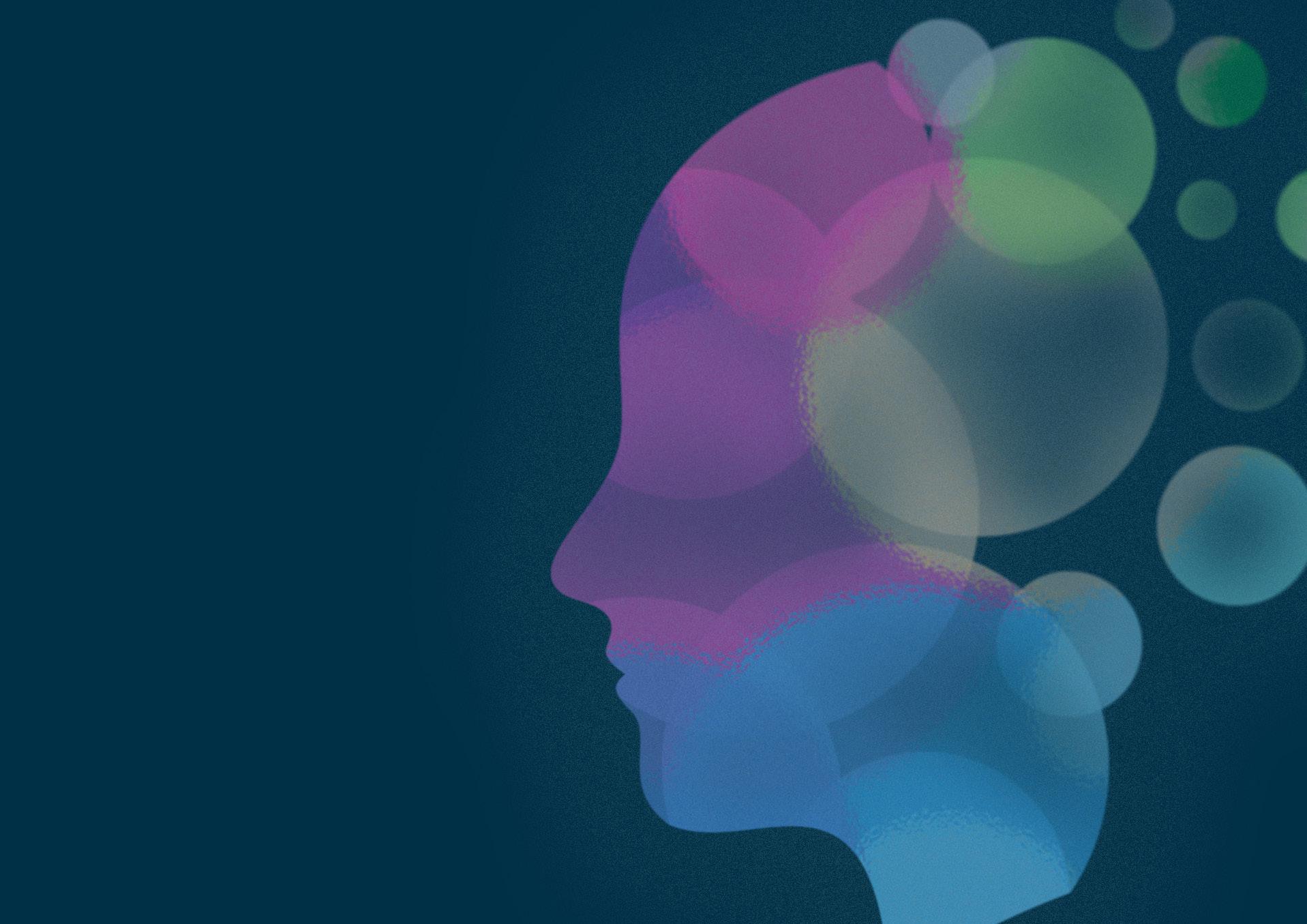
6 minute read
Moral injury in health care – It’s not just burnout
Wendy Dean, MD, and Jeff Cain, MD

Advertisement
According to the American Medical Association (AMA), physician burnout is an epidemic in the U.S. health care system.1
More than half of physicians report exhaustion, cynicism or decreased productivity. But five years ago, an article in STAT News First Opinion proposed a change in how we talk about, and think about, distress in health care workers, adding “moral injury” to the health care lexicon. It immediately went viral and is excerpted below:
The concept of burnout resonates poorly with physicians: it suggests a failure of resourcefulness and resilience, traits that most physicians have finely honed during decades of intense training and demanding work.
Many well-intentioned wellness initiatives over the past half century have focused on bolstering individual coping strategies, but:
Physicians are smart, tough, durable, resourceful people. If there was a way to MacGyver themselves out of this situation by working harder, smarter or differently, they would have done it already.
We believe that burnout is a symptom of something larger: our broken health care system. The increasingly complex web of providers’ highly conflicted allegiances — to patients, to self and to employers — and its attendant moral injury may be driving the health care ecosystem to a tipping point and causing the collapse of resilience.
The term “moral injury” has traditionally been used to describe soldiers’ responses to their actions in war. It represents “perpetrating, failing to prevent, bearing witness to, or learning about acts that transgress deeply held moral beliefs and expectations.”
The moral injury of health care is not the offense of killing another human in the context of war. It is being unable to provide high-quality care and healing in the context of our current health care system.2
Three years later, in the throes of a global pandemic, which brought the vulnerabilities of our health care systems into stark relief, Ed Yong summarized how many physicians describe their distress in The Atlantic in November 2021:

Health care workers aren’t quitting because they can’t handle their jobs. They’re quitting because they can’t handle being unable to do their jobs. Even before COVID-19, many of them struggled to bridge the gap between the noble ideals of their profession and the realities of its business. The pandemic simply pushed them past the limits of that compromise.3
Moral injury describes the gap between the covenants sworn by healing professionals and the realities of the increasingly corporatized environments in which they work. The concept encapsulates what scores of physicians had described when asked why they felt the term “burnout” did not accurately describe their experience: they were plenty resilient, but they were unable to get patients necessary care because of constraints outside of their control. Moral injury identified elements of distress that seemed distinct from burnout and which spoke to what physicians felt but couldn’t articulate, “…the frustration, anger, and disorientation associated with existential threats to our professional identity as corporate interests undermined the oaths we swore to put our patients’ needs first when we embarked on this path.”
Moral injury belongs alongside burnout, rather than displacing it. Both published and preliminary research has confirmed the initial hypothesis that burnout and moral injury are distinct experiences, which frequently occur together. In other words, distress breaks along not one but two fault lines. First are the operational demands of burnout: clumsy electronic medical records, understaffing, unreasonable scheduling, administrative overburden, and the like. Second are the relational ruptures of moral injury that arise from betrayal, regardless of whether such betrayal was intentional: the expectations of doing yet more with less; misaligned values (i.e., the words on the walls –mission, vision and value statements, for example – don’t match what’s happening in the halls); administrators lacking empathy for frontline challenges or curiosity about clinician perspectives make decisions that unwittingly compromise clinical care as a result. Breaking distress into its two component parts, to address each with appropriately targeted therapies, will better address the crisis we face.
Researchers have provided countless solutions for physician burnout. Until recently, many of the proposed solutions acknowledged that systems change is difficult, complex and expensive, and advocated for support programs to help physicians better tolerate these difficult systems as individuals. Physician wellbeing programs focus on personal resilience – stress management; yoga; meditation or mindfulness; and optimizing the performance triad of sleep, nutrition and exercise. More recent recommendations have also begun calling for addressing systems issues like excessive documentation, electronic health records without intuitive user interfaces, inflexible scheduling systems, inability to coordinate care within or between systems, poor leadership and short staffing. Resources for tackling burnout are now readily available from the AMA, the Colorado
Medical Society, and physician specialty societies.

The evidence for addressing moral injury in health care is building. From research in military populations and interviews by one author (Wendy Dean, MD), standing up and speaking out against perceived betrayals are important steps to reducing the risk of moral injury. But individual interventions are not the only mainstay of relief. Instead, the key to reducing moral injury is identifying, acknowledging and addressing the regular betrayals – intentional and unintentional – inherent in our current health care systems.
Such betrayal can be as simple and as unintentional as communication that lacks acknowledgement and transparency. In a recent study, nearly one-third of physicians and half of nurses felt administration did not listen or respond to clinicians’ concerns, and in some of lacked confidence that hospital management would resolve clinician-identified problems
47% 42% DOCTORS NURSES
the hospitals studied, more than half the clinicians felt ignored. Forty-two percent of physicians and 47 percent of nurses in the same study lacked confidence that hospital management would resolve clinician-identified problems in patient care. As any couples therapist knows, relationship repair after a betrayal is impossible if basic communication skills – listening and conveying that you have heard – are lacking. Organizations need to reestablish basics to restore trust with our health care workforce.
A recently completed Delphi survey asked those with academic or clinical competence in moral injury what characteristics health systems with a low likelihood of inflicting moral injury would share. Participants broadly agreed those systems would be wise, learn from their mistakes and challenges; vulnerable; trustworthy – doing what they say, when they say it; mentoring or succession planning with intent; just; and courageous – genuinely welcoming even difficult feedback from the workforce and itself pushing back on requirements that potentially harm the workforce.
THERE ARE FOUR WAYS THE COLORADO MEDICAL SOCIETY CAN HELP: 1st
First, by incorporating the new language of moral injury alongside “burnout” in our publications and physician education. As one therapist who works with physicians said, “Talking with my clients about moral injury rather than burnout took away their shame and guilt. It wasn’t only about them anymore; it was also about the systems they work in.” The right framing can begin healing.
2nd
Second, CMS should advocate for health care systems to treat physicians as respected partners to eliminate the causes of moral injury, training physicians to become advocates for change, and speaking up to health care systems and the public, so that physicians do not have to walk this path alone.
3rd
Third, CMS should advocate for health care system changes to reduce administrative burdens, improve EHR interfaces, reduce unnecessarily restrictive referral and medication guidelines, and the multiple barriers that impede effective patient care and contribute to burnout.
4th
Fourth, CMS should continue to provide and evaluate the effectiveness of programs like their Doc2Doc Wellbeing Consulting program and collaborations with the Colorado Physician Health Program.
The COVID-19 pandemic was not the start of physician distress, but it clarified what many previously suspected – burnout from operational stresses are not the only source of physician suffering. Until we accept that moral injury is a fact of working in human systems, and requires attention and repair, there will never be adequate solutions to physician distress. We have an opportunity to use lessons learned from the pandemic to rebuild stronger, more sustainable institutions for the improved health of physicians and our patients. Let’s not squander it. ■
Wendy Dean, MD, is a psychiatrist, author of “If I Betray These Words,” cohost of the podcast, “Moral Matters,” and co-founder of the Moral Injury of Healthcare. She previously worked for the U.S. Army in medical technology innovation.
Jeffrey Cain, MD, is a family physician, a clinical professor at the University of Colorado School of Medicine, and a past president of the American Academy of Family Physicians.
References:
1. https://www.ama-assn.org/ practice-management/ physician-health/ what-physician-burnout
2. Talbot, S, Dean, W. Physicians aren’t ‘burning out.’ They’re suffering from moral injury. STAT News First Opinion. July 26, 2018.
3. Yong, E. Why Healthcare Workers Are Quitting In Droves. The Atlantic. Nov. 16, 2021.
4. West CP, Dyrbye LN, Sinsky C, et al. Resilience and Burnout Among Physicians and the General US Working Population. JAMA Netw Open. 2020;3(7):e209385. doi:10.1001/ jamanetworkopen.2020.9385
5. Dean W. How the conversation about moral injury in health care is changing. STAT News First Opinion. June 7, 2023.
6. Rosen, A., Cahill, J.M. & Dugdale, L.S. Moral Injury in Health Care: Identification and Repair in the COVID-19 Era. J GEN INTERN MED 37, 3739–3743 (2022). https:// doi.org/10.1007/s11606-022-07761-5
7. Morris, D. Moral Injury and healthcare, Oct 2022: The evidence. Presented at: Erikson Institute Fall Conference on Moral Injury. October 2022.
8. Maslach C. and Leiter M.P. (2016) Burnout. In: Stress: Concepts, Cognition, Emotion, and Behavior, Academic Press, Cambridge, 351-357. https://doi.org/10.1016/ B978-0-12-800951-2.00044-3
9. https://www.ama-assn.org/ practice-management/ physician-health/measuring-andaddressing-physician-burnout
10. https://www.cms.org/articles/ category/physician-wellbeing
11. Dean W, Talbot S. If I Betray These Words: Moral Injury in Medicine and Why It’s So Hard for Clinicians to Put Patients First. Steerforth Press. 2023.
12. Aiken LH, Lasater KB, Sloane DM, et al. Physician and Nurse WellBeing and Preferred Interventions to Address Burnout in Hospital Practice: Factors Associated With Turnover, Outcomes, and Patient Safety. JAMA Health Forum. 2023;4(7):e231809. doi:10.1001/jamahealthforum. 2023.1809









